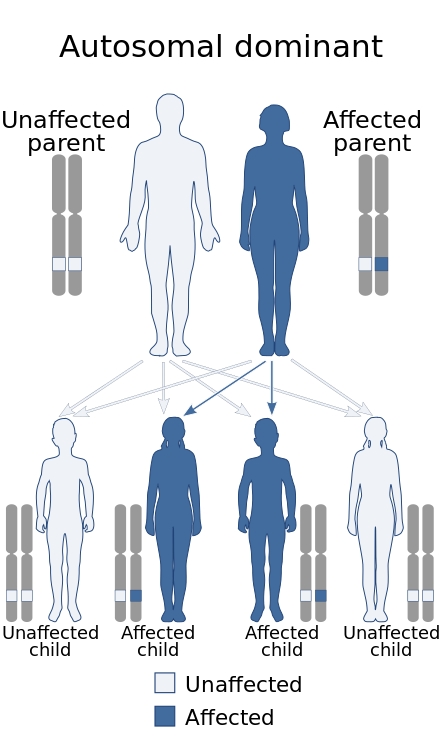von Willebrand Disease
Von Willebrand Disease (VWD) is the most common hereditary blood-clotting disorder in humans and can also affect several breeds of dogs. It arises from a deficiency in the quality or quantity of von Willebrand factor (VWF), a protein essential for platelet adhesion. The disorder can be hereditary, acquired, or pseudo/platelet type. The hereditary types include VWD type 1, type 2 (with various subtypes), and type 3.

Signs and Symptoms
VWD presents with varying degrees of bleeding tendency, typically manifesting as easy bruising, nosebleeds, and bleeding gums. Women may experience heavy menstrual periods and blood loss during childbirth. Severe internal bleeding and bleeding into joints are uncommon, except in the most severe type, VWD type 3.
Genetics
The VWF gene is located on the short arm of chromosome 12 (12p13.2) and spans 52 exons over 178kbp. Types 1 and 2 are usually inherited as autosomal dominant traits, while type 3 is autosomal recessive. VWD affects approximately 1% of the population and impacts men and women equally. Genetic testing is primarily useful for evaluating family members with known variants and differentiating between specific subtypes of VWD and haemophilia A.
Pathophysiology
Von Willebrand factor is very important in high blood flow and shear stress conditions, predominantly affecting organs with many small vessels. The ABO blood group can influence VWD presentation, with individuals of blood group O having lower mean levels of VWF.
Diagnosis
Diagnosis starts with basic tests such as a complete blood count (CBC), activated partial thromboplastin time (APTT), prothrombin time with International Normalised Ratio (PTINR), thrombin time (TT), and fibrinogen level. Specific tests for VWD include measuring the amount and functionality of VWF, factor VIII levels, and platelet aggregation assays. Detailed subtyping may involve additional assays and multimer analysis.

Types
Type 1
Type 1 VWD is a quantitative defect with VWF levels at 20-50% of normal. Most patients are asymptomatic or have mild symptoms, but some may experience significant bleeding following surgical procedures or during menstruation.
Type 2
Type 2 VWD is a qualitative defect with four subtypes: 2A, 2B, 2M, and 2N, each with different underlying mechanisms and clinical manifestations.
Type 3
Type 3 VWD is the most severe form, characterised by a nearly complete absence of VWF and associated with severe bleeding episodes, similar to severe haemophilia A.

Platelet-type and Acquired VWD
Platelet-type VWD is an autosomal dominant condition caused by a defect in the platelet GPIb receptor, while acquired VWD can occur due to autoantibodies or other medical conditions such as aortic valve stenosis.
Treatment
Treatment for VWD includes desmopressin for minor trauma or minor surgical procedures in types 1 and 2A. For women with heavy menstrual bleeding, oestrogen-containing oral contraceptives are effective. Human-derived factor VIII concentrates containing VWF are used for surgery and significant haemorrhage. Recombinant von Willebrand factor (vonicog alfa) is also available. Blood transfusions and platelet concentrates may be administered as needed.
Epidemiology
VWD has a prevalence of about one in 100 individuals, though clinically significant cases are rarer. It is more frequently detected in women due to symptoms during menstruation and may be more severe in individuals with blood type O.
History
Von Willebrand Disease was first described by Finnish physician Erik Adolf von Willebrand in 1926. The factor causing prolonged bleeding time was later named in his honour, and significant advances in understanding and diagnosing the disease have been made since its initial discovery.
Other Animals
VWD is not exclusive to humans and can affect various animals, including dogs, pigs, and mice. Genetic screening for VWD is available for dogs, and pigs and mice serve as valuable models for research.
Oral Manifestations and Dental Considerations
Severe VWD can lead to spontaneous gingival bleeding, ecchymosis, and postoperative bleeding. Dental protocols recommend using factor concentrates and local hemostatic techniques, avoiding NSAIDs, and considering appropriate local anaesthetic agents.
Self-assessment MCQs (single best answer)
What is von Willebrand Disease (VWD)?
Which protein deficiency characterises von Willebrand Disease?
How is type 1 von Willebrand Disease inherited?
Which of the following is NOT a common symptom of VWD?
What is the main initial diagnostic test for VWD?
Which type of VWD is the most severe?
What is the treatment for minor trauma in VWD type 1 and 2A?
Which blood group has been associated with lower mean levels of VWF?
Who first described von Willebrand Disease?
Which of the following animals is NOT affected by von Willebrand Disease?
Dentaljuce
Dentaljuce provides Enhanced Continuing Professional Development (CPD) with GDC-approved Certificates for dental professionals worldwide.
Founded in 2009 by the award-winning Masters team from the School of Dentistry at the University of Birmingham, Dentaljuce has established itself as the leading platform for online CPD.
With over 100 high-quality online courses available for a single annual membership fee, Dentaljuce offers comprehensive e-learning designed for busy dental professionals.
The courses cover a complete range of topics, from clinical skills to patient communication, and are suitable for dentists, nurses, hygienists, therapists, students, and practice managers.
Dentaljuce features Dr. Aiden, a dentally trained AI-powered personal tutor available 24/7 to assist with queries and provide guidance through complex topics, enhancing the learning experience.
Check out our range of courses, or sign up now!


